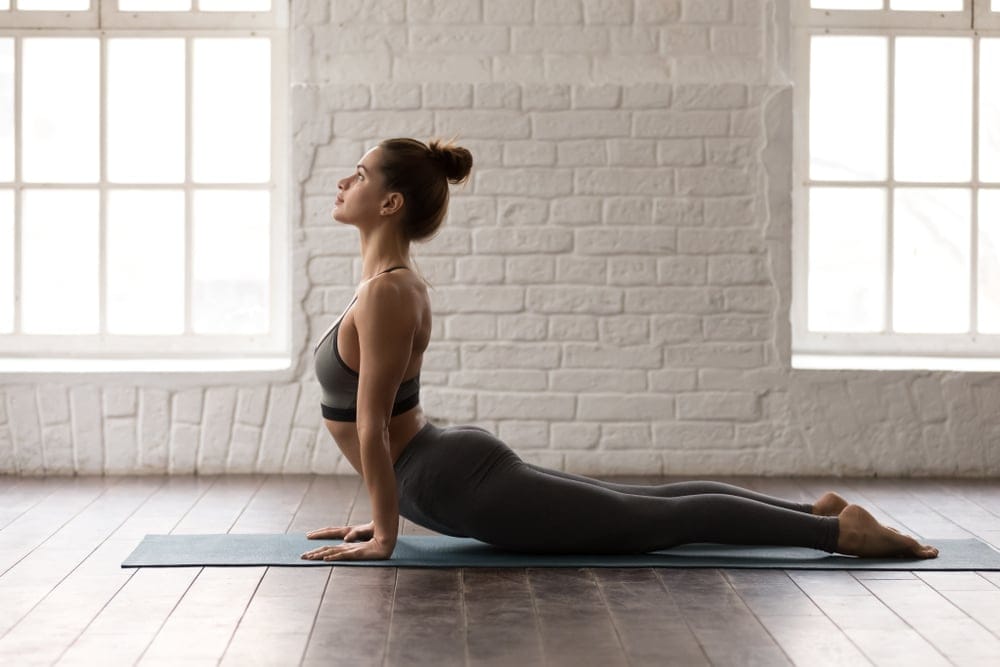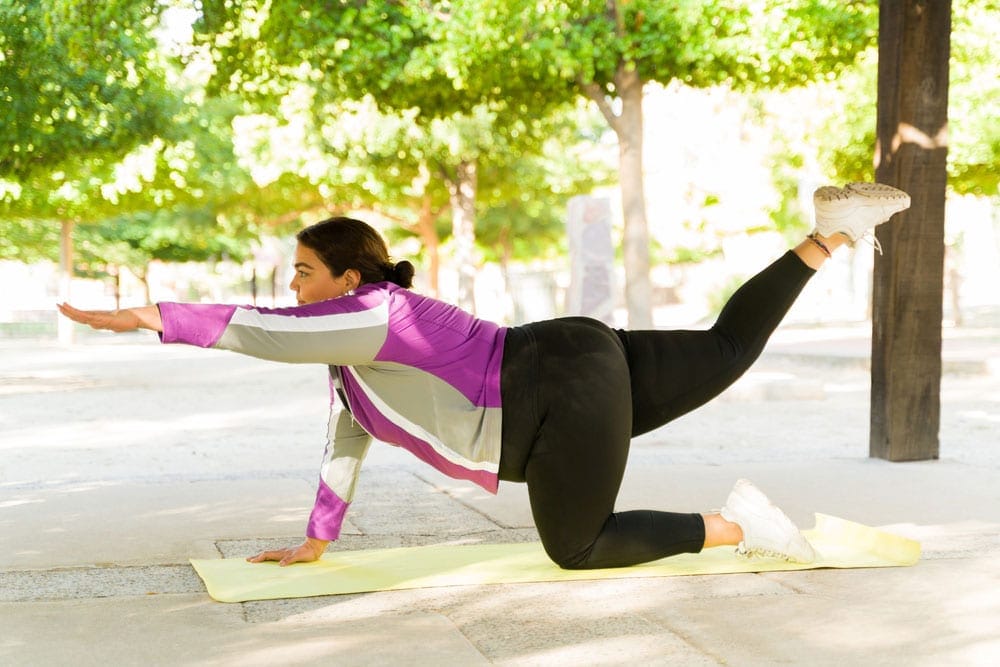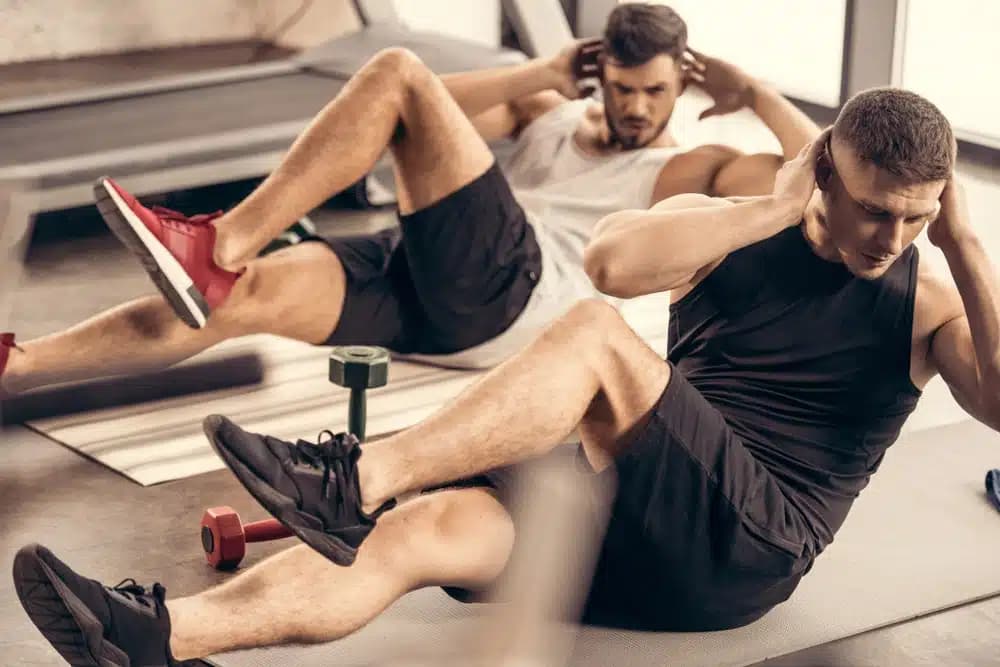Why Can't I Do a Single Sit-Up?
This guide will help you learn the mechanics of the sit-up. Find out why you can’t do even a single sit-up and get tips to improve.
Although you may not be a rep master, able to crank out 500 push-ups or sit-ups, doing just one or hopefully a few sit-ups is an achievable goal that most of us should be able to perform in the gym, right?
If you face certain physical barriers, getting into a sit-up can be a little bit of a challenge. let's take a look at some reasons you might not be able to do a single sit up. will understand mobility issues, weight considerations, and technique.
All of these factors can influence your ability to do a proper sit-up. These tips will have you sitting up and working on getting great abs with confidence and ease.
Learn how you can build up that beach body, look like a Greek god, and start dialing your abs in to get perfect V-lines that are sure to impress.
What Are Sit-Ups?
A sit-up is an exercise where you lie on your back, plant your feet on the ground and raise your body all the way up to a sitting position.
Sit-Ups vs. Crunches.
Sit-ups differ slightly from crunches in one key aspect. In a sit-up, you're sitting your body all the way up, while in a crunch you just bring your shoulders and head up off the ground to crunch at the abdominals.
Think of a crunch as the starting portion of a sit-up.
Sit-Ups— Muscles Worked
During sit-ups you work your full rectus abdominis, or the six pack muscle on the front of your torso. Other muscles include the obliques. This muscle group gets a bit of a workout during your sit-ups as well.
Sit-ups can also hit your transverse abdominis. When activated effectively, studies have shown that working this muscle may help reduce back pain.
Because you're bending to sit up at the hips, you also work your hip flexors including the iliopsoas, sartorius, and rectus femoris muscles.
To keep your body stable, your lower leg muscles and feet do a little bit of the work as well. But they are considered secondary muscles worked in a sit-up.
Why Are Sit-Ups Hard?
Sit-ups are mainly a challenging move since you're working against gravity rather than with it. Take another core exercise like the plank, for example.
Yes, the plank is a very difficult move. But the application of force works opposite to a sit-up. In this move instead of trying to raise your body up, you're trying to hold your body stable so it doesn't fall down.
Think about these two moves as being “different types of hard.” One may not be easier or harder. That would depend on your body type, your training and abilities, and your mental energy.
But in some cases a sit-up may feel harder for you because you will have to raise your body up against gravity, versus holding yourself in place.
Proper Sit-UpTechnique
Although sit-ups are hailed as one of the most common classic core-building exercises, many people actually don't know how to do them properly.
Let’s look at some form mistakes many people make while training their sit-ups.
Crunching Your Neck
When we sit up, there may be a tendency to lead with the head to use momentum and “swing” the rest of the body up.
Do not do this! Long-term, it puts a lot of strain on your spinal vertebrae. Pushing your head either too far forward or too far back will cause wear and tear on your spine. Focus on keeping your cervical vertebrae, the spinal vertebrae along your neck, in line with the rest of your spine.
Anchoring Your Feet
Anchoring your feet can seem like a hack if you struggle to do even a single sit-up. But if you do use a foot anchor for example placing a barbell or other apparatus over your feet to keep them in place so they don't lift off the ground during your sit-ups, you're actually losing the integrity of your movement.
Sit-ups are meant to target your abdominal muscles, not your hip flexors. If you're anchoring your feet you're putting too much work into the hip flexors, and taking away from abdominal engagement.
Focus on building strength in your abdominals instead of anchoring the feet to try to cheat this movement. You may have to start with a different abdominal exercise variation like a crunch where you only lift your head and shoulders off the ground or a plank where you hold your body up on both arms and both feet in the air keeping a straight angle through the length of the body for full stability so you don't move.
Although not all ab exercises mimic the movement of the sit-up, they will help make your core overall stronger. This way, you won’t have to anchor your feet, since once the abs are strong enough, the feet won’t have a temptation to lift off the ground.
Weak Core
A weak core is probably one of the biggest reasons why you may struggle to do sit-ups. Even people who are of normal weight and assume that because they're not overweight they should be strong can be surprised to find themselves struggling to perform sit-ups.
This could be the sign of a weak core. Although to a certain extent your core keeps you upright and balancing when you walk run jump or do any other form of functional movement, you will lack stability and activation in your deep core muscles when you don't do any work to train the core.
Include other core work in your ab routine like:
- Plank
- Mountain climbers
- Crunches
- Bear crawl
- Russian twist
And abdominal exercises you enjoy and may find easier to do than a sit-up can be a good starting point to develop your strength.
Bad Hip Mobility
Contrary to what you might think, a lot of the movement behind a sit-up comes from the hips and hip flexors rather than the core.
In fact, a study found that most people who work sedentary jobs, aka most of us that do desk work, have limited hip extension abilities.
What what is hip extension? This is your ability to bring your torso and your thighs further away from each other across the hip joint so instead of bending forward to touch your toes (hip flexion) this is your ability to arch your torso backward using the hip joint.
Although your hips are inflection when you do sit-ups, limited capacity for extension can still cause your hip flexors to be overall tight. This can certainly impact your flexion capabilities and make doing sit-ups hard for you.
If you have weak or bad hips, you may have difficulty performing sit-ups unrelated to core strength.
Think this might be your issue in getting into a sit-up? Make sure to train and stretch your hip flexors.
You may benefit from moves like yoga inspired stretching, including the cobra position.
Here, you support your weight on both your hands, pulling your body upwards to stretch both your hip flexors and your abs.

You can also try performing moves like leg swings or lying down figure four stretches to help with your hip mobility.
Poor Breath Technique
If you don't regulate your breathing correctly while you do sit-ups, it could take away from your ability to move freely. To help sophisticate your sit-ups and make them easier, focus on exhaling as you move upward and inhaling as you move downward.
Forcing air out of your lungs while you sit up will contract your muscles even more deeply to help them bring you up in your movement.
This also helps to incorporate all your muscles to work evenly.
Overweight
Performing sit-ups requires you to lift your body mass off the ground. If you are overweight or obese, you may not be able to lift your body up using your core muscles.
Focus on reducing your amount of total body fat while you train. Things like walking on a treadmill, increasing your daily step count or cycling can be good gentle ways to get your heart rate up if you are overweight.
Should you work out your abs if you have belly fat? Yes. Overweight individuals can and should be working to combat belly fat.
Too much fat around your gut, especially the visceral fat that lies between your organs has been linked to increased mortality rates. This is especially true for men but applies to women as well.
Overweight individuals can benefit from abdominal activities where they may need to work less to bring their bodies upwards. Any physical activity that helps you get sweaty is a great way to reduce body fat.
Think about ab exercises like bird dog, dead bugs, side plank or plank to help work your core with less strain around the hips and belly. These moves are also wonderful for the pelvic floor muscles. Keep in mind that these moves require a lot of balance and stability.

Injuries
If you’ve had a previous injury in your pelvis, abdominals, or hip flexors, you may struggle to get up into even a single sit-up.
Although most healthy people can perform full sit-ups, they may be challenging for your spine if you've dealt with prior back injuries.
Because of the pattern of motion, a sit-up forces you to roll through your spine. Especially if you're doing this move on the floor unsupported by a mat, this can be difficult on your vertebrae.
If you have access to a yoga mat or other protective surface, try your sit-ups here. This can alleviate some of the back pain that you may feel associated with sit-ups.
The Takeaway
If you struggle to do even a single sit-up there could be many culprits at fault. For most people it looks like weak hips are one of the main causes.
If this seems to be more at play than abdominal strength for you there are a number of ways you can strengthen your hips and improve hip mobility.
That being said there are many factors that could go into the reasons why you can't do one sit-up
Don't get discouraged and keep on trying! If you find yourself straining or experiencing pain doing sit-ups, switch to an alternate abdominal activity. This could be something like a high plank or a crunch which involves a similar motion to sit-ups.
You may also want to consider other core workouts for this group of muscles that don't require as much of a crunch to the upper body. A high plank, forearm plank, or plank with your knees bent is a great was to engage your core with no bend at the hips.
Once you start improving your abdominal strength you should soon be able to see progress in your sit-ups.
When you can do one sit up and you would like to be able to do more, keep an eye on your form. Performing this move with expert form is the best way to ensure you don't hurt your spine or abdominals. Then you can move up to larger or complex set-rep structures that will help you pair your defined abs with a round butt shape, wide clavicles, optimal front delts and strong biceps. All these can help you build the body of your dreams.
Don’t just sit back and watch. Flex offers an all-in-one workout platform to help you learn new exercises, visualize your fitness journey and keep all your PRs in one place.
We’ve made it simple to work on customized fitness plans or to introduce a little friendly competition to your fitness community by sharing exercises with your friends. Try it for free through the Flex fitness app.
References:
Kaiser JT, Reddy V, Launico MV, et al. Anatomy, Head and Neck: Cervical Vertebrae. [Updated 2023 Oct 24]. In: StatPearls [Internet]. Treasure Island (FL): StatPearls Publishing; 2023 Jan-. Available from: https://www.ncbi.nlm.nih.gov/books/NBK539734/
Konrad, A., Močnik, R., Titze, S., Nakamura, M., & Tilp, M. (2021). The Influence of Stretching the Hip Flexor Muscles on Performance Parameters. A Systematic Review with Meta-Analysis. International journal of environmental research and public health, 18(4), 1936. https://doi.org/10.3390/ijerph18041936
Lynders C. (2019). The Critical Role of Development of the Transversus Abdominis in the Prevention and Treatment of Low Back Pain. HSS journal : the musculoskeletal journal of Hospital for Special Surgery, 15(3), 214–220. https://doi.org/10.1007/s11420-019-09717-8
Nauli, A. M., & Matin, S. (2019). Why Do Men Accumulate Abdominal Visceral Fat?. Frontiers in physiology, 10, 1486. https://doi.org/10.3389/fphys.2019.01486
Related articles


Get fit with Flex
Build muscle & lose weight fast for free.
Available on iPhone + Apple Watch





